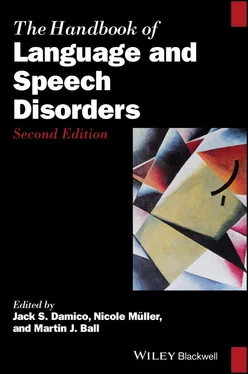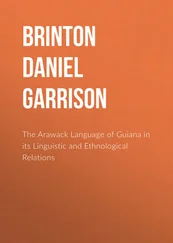1 Abberley, P. (1987). The concept of oppression and the development of a social theory of disability. Disability, Handicap, & Society, 2(1), 5–19.
2 American Psychiatric Association. (1980). Diagnostic and statistical manual of mental disorders, DSM‐III (3rd ed.). Washington, DC: Author.
3 American Psychiatric Association. (1994). Diagnostic and statistical manual of mental disorders, DSM‐IV (4th ed.). Washington, DC: Author.
4 American Psychiatric Association. (2013). Diagnostic and Statistical Manual of Mental Disorders, DSM‐5 (5th ed.). Washington, DC: American Psychiatric Association.
5 Apple, M. W. (1982). Education and power. Boston, MA: Routledge & Kegan Paul.
6 Archer, M., & Green, L. (1996). Classification of learning difficulties. In S. Kriegler & P. Englebrecht (Eds.), Perspectives on learning difficulties. Hartfield, SA: Van Schaik.
7 Artiles, A. J., Higareda, H., Rueda, R., & Salazar, J. J. (2005). Within‐group diversity in minority disproportionate representation: English language learners in urban school districts. Exceptional Children, 71, 283–300.
8 Artiles, A. J., & Ortiz, A. A. (2002). English language learners with special education needs: Identification, assessment, and instruction. McHenry, IL: Delta Systems.
9 Aspel, A. D., Willis, W. G., & Faust, D. (1998). School psychologists’ diagnostic decision‐making processes: Objective‐subjective discrepancies. Journal of School Psychology, 36, 137–149.
10 Augustine, L. E., & Damico, J. S. (1995). Attention deficit hyperactivity disorder: The scope of the problem. Seminars in Speech and Language, 16(4), 243–258.
11 Bagatell, N. (2010). From cure to community: Transforming notions of autism. Ethos, 38(1), 33–55.
12 Baker, J. (2008). Mercury, vaccines, and autism. American Journal of Public Health, 98(2), 244–254.
13 Balint, M. (1957). The doctor, his patient, and the illness. New York, NY: International Universities Press.
14 Barsky, A., & Boros, J. F. (1995). Somatization and medicalization in the era of managed care. Journal of the American Medical Association, 274, 1931–1934.
15 Becker, H. S. (1963). Outsiders: Studies in the sociology of deviance. New York, NY: The Free Press.
16 Berger, P. L., & Luckmann, T. (1967). The social construction of reality: A treatise in the sociology of knowledge. New York, NY: Anchor.
17 Bernstein, B. (1996). Pedagogy, symbolic control and identity. London, UK: Taylor & Francis.
18 Blumer, H. (1969). Symbolic interactionism: Perspective and method. Englewood Cliffs, NJ: Prentice‐Hall.
19 Boxer, R., Challen, M., & McCarthy, M. (1991). Developing an assessment framework: The distinctive contribution of the educational psychologist. Educational Psychology in Practice, 7, 30–34.
20 Bradley, R. H., & Corwyn, R. F. (2002). Socioeconomic status and child development. Annual Review of Psychology, 53, 371–399.
21 Brantlinger, E. (1997). Using ideology: Cases of nonrecognition of the politics of research and practice in special education. Review of Educational Research, 67(4), 425–459.
22 Brechin, A. (1999). Understandings of learning disability. In J. Swain & S. French (Eds.), Therapy and learning difficulties: Advocacy, participation, and partnership. Oxford, UK: Butterworth Heinemann.
23 Brinton, B., & Fujiki, M. (2010). Principles of assessment and intervention. In J. S. Damico, N. Müller, & M. J. Ball (Eds.), The handbook of language and speech disorders (pp. 131–150). Chichester, UK: Wiley‐Blackwell.
24 Broadfoot, P. (1994). Educational assessment: The myth of measurement. Bristol, UK: University of Bristol.
25 Broadfoot, P. (1996). Education, assessment, and society. Buckingham, UK: Open University Press.
26 Broom, D. H., & Woodward, R. V. (1996). Medicalization reconsidered: Toward a collaborative approach to care. Sociology of Health and Illness, 18, 357–378.
27 Brown, P. (1995). Naming and framing: The social construction of diagnosis and illness. Journal of Health and Social Behavior, 35(Extra Issue), 34–52.
28 Bruner, J. S. (1986). Actual minds, possible worlds. Cambridge, MA: Harvard University Press.
29 Bruner, J. S. (1990). Acts of meaning. Cambridge, MA: Harvard University Press.
30 Bruner, J. S. (1991). The narrative construction of reality. Critical Inquiry, 18(Autumn), 1–21.
31 Bussing, R., Schoenberg, N. E., & Rogers, K. M. (1998). Explanatory models of ADHD: Do they differ by ethnicity, child gender, or treatment status? Journal of Emotional and Behavioral Disorders, 6, 233–242.
32 Cacace, A. T., & McFarland, D. J. (1998). Central auditory processing disorder in school‐aged children: A critical review. Journal of Speech, Language, & Hearing Research, 41, 355–373.
33 Carroll, J. B. (1997). Psychometrics, intelligence, and public perception. Intelligence, 24, 25–52.
34 Chakrabarti, S., & Fombonne, E. (2001). Pervasive developmental disorders in preschool children. Journal of American Medical Association, 285, 3093–3099.
35 Cherkes‐Julkowski, M., Sharp, S., & Stolzenberg, J.. (Eds.) (1997). Rethinking attention deficit disorders. Cambridge, MA: Brookline Books.
36 Cole, K., Schwartz, I., Notari, A., Dale, P., & Mills, P. (1995). Examination of the stability of two measures of defining specific language impairment. Applied PsychoLinguistics, 16, 103–123.
37 Coles, G. (1987). The learning mystique: A critical look at “learning disabilities”. New York, NY: Pantheon.
38 Connor, D. (2006). Michael’s story: “I get into so much trouble just by walking”: Narrative knowing and life at the intersections of learning disability, race, and class. Equity & Excellence in Education, 39(2), 154–165.
39 Connor, D. J., & Ferri, B. A. (2005). Integration and inclusion: A troubling nexus: Race, disability, and special education. The Journal of African American History, 90(1/2), 107–127.
40 Conrad, P. (1976). Identifying hyperactive children: The medicalization of deviant behavior. Lexington, MA: D.C. Heath.
41 Conrad, P. (1992). Medicalization and social control. Annual Review of Sociology, 18, 209–232.
42 Conrad, P. (2000). Medicalization, genetics, and human problems. In C. Bird, P. Conrad, & A. Fremont (Eds.), The handbook of medical sociology (pp. 322–333). Upper Saddle River, NJ: Prentice Hall.
43 Conrad, P. (2007). The medicalization of society. On the transformation of human conditions into treatable disorders. Baltimore, MD: Johns Hopkins University Press.
44 Conrad, P. (2009). The shifting engines of medicalization. In P. Conrad (Ed.), The sociology of health & illness. Critical perspectives (pp. 480–492). New York, NY: Worth Publishers.
45 Conrad, P., & Potter, D. (2000). From hyperactive children to ADHD adults: Observations on the expansion of medical categories. Social Problems, 47(4), 559–582.
46 Conti‐Ramsden, G., Crutchley, A., & Botting, N. (1999). Classification of children with specific language impairment: Longitudinal considerations. Journal of Speech, Language, and Hearing Research, 42, 1195–1204.
47 Cooksey, E., & Brown, P. (1998). Spinning on its axes: DSM and the social construction of psychiatric diagnosis. International Journal of Health Services, 28, 525–554.
48 Cronbach, L. J. (1988). Five perspectives on validity argument. In H. Weiner & H. Braun (Eds.), Test validity (pp. 3–17). Hillsdale, NJ: Lawrence Erlbaum.
49 Cummins, J. (2000). Language, power and pedagogy: Bilingual children in the crossfire. Clevedon, UK: Multilingual Matters.
50 Damico, J. S. (1991). Descriptive assessment of communicative ability in limited English proficient students. In E. V. Hamayan & J. S. Damico (Eds.), Limiting bias in the assessment of bilingual students (pp. 157–218). Austin, TX: Pro‐Ed.
Читать дальше












